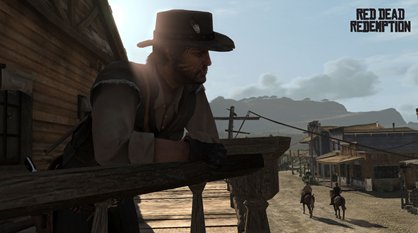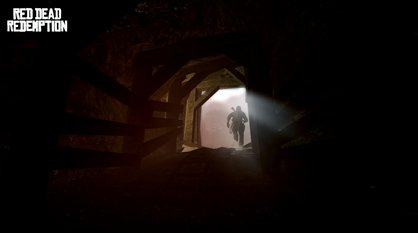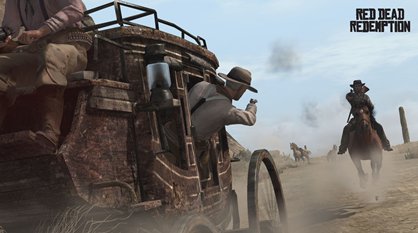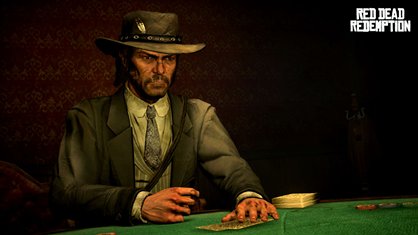A day with Red Dead Redemption
We’ve played through the first 7 hours of the story; here’s what we thought
Armadillo, like the other towns in Redemption, is more than just a collection of wandering civilians and rustic buildings. There’s actually quite a bit to do here, like visiting stores (which sell everything from healing items and guns to new horses and treasure maps), or going to the local saloon and turning down the attentions of prostitutes (Marston is married). More interestingly, there’s also a little movie theater that reminded us of the TVs in GTA IV, except that it only shows silent (but original!) animated shorts for the princely sum of $2.

Above: You can also rent property, which is cool
That’s another thing you’ll need to get used to; since it takes place in the early 1900s, cash goes a lot further than it does in GTA. Of course, that also means you’ll get a lot less of it, with payouts for missions averaging between tens and hundreds of dollars. It’s odd that a game could make us think of a $25 price tag on a bottle of potentially life-saving medicine as outrageous, but when you’ve only got around $40 to play with, decisions like that can be surprisingly tough.
From here, we were more or less free to do as we pleased; we could head back and do more favors for Bonnie, or we could pay a visit to the sheriff and try to get his reluctant help in hunting down Williamson. We could also explore the surrounding countryside, which more often than not got us into trouble with the local wildlife, or into random encounters with bandits and/or lawmen.

Sometimes you’ll stumble across a prospector who’s pinned down by a couple of bandits, and other times someone will run up and beg you to save his friend from a lynching, giving you a chance to shoot the hanging rope (yes, just like in The Good, The Bad and The Ugly). Be careful, though; some people claiming to be in need of help will instead try to kill you or steal your horse (which, you know, is always a good strategy when you’re not the one with the guns). Once, we were even flagged down by an apparently injured woman, only to be immediately set on by her bandit friends.
When things like that happen, you’ll be glad that the wilderness offers a lot of rocks and trees to dive behind for cover. In general, surviving firefights revolves around effective use of sticky cover, which is a lot easier to use than it was in GTA IV. In fact, fights in general are easier than GTA IV’s, because so long as you’re not being shot, your health will gradually refill (turns out that medicine we mentioned earlier is an emergency solution that’s also vital for certain missions). And even if you manage to die or otherwise fail during a mission, the forgiving checkpoint system will just drop you back in near the point where you bit the dust.

Cover tactics won’t do much good, however, against the wolves and cougars that rove through the wilderness. These bastards can take down your horse (and you) in seconds, and more often than not they could absorb multiple point-blank shots to the face before they go down. On average we’d rather fight outlaws, even if we can’t skin them and sell their pelts.
Weekly digests, tales from the communities you love, and more

Above: F**K!
Wandering into the brush also let us take advantage of Redemption’s smartest feature, campsites. Using a camping kit anywhere outside of civilization gives you the chance to not only save your game, but also to fast-travel to any town or notable location you’ve visited.
Honor and glory
As far as the story is concerned, Marston is a reluctant killer who’s trying to do right by the law (which prompts Bonnie to call him a hypocrite). Seeing as he’s a former outlaw, though, and seeing as this is a game made by the creators of GTA, his morality doesn’t end there, and you have a certain amount of leeway to shape it.

For example, there’s a trio of semi-random “stranger” missions we found early on (these are sort of like the “pedestrian” missions in GTA IV, except there are more of them and they’re easier to find), wherein crying townsfolk asked us to investigate the disappearance of a loved one who disappeared into the nearby hills.



